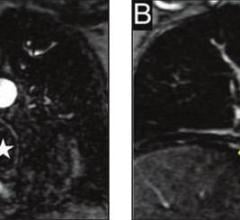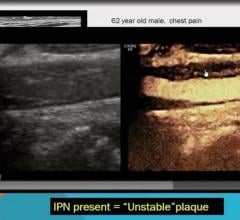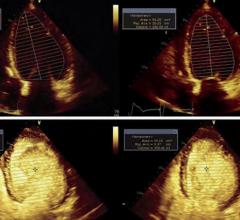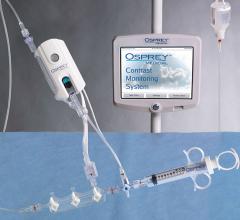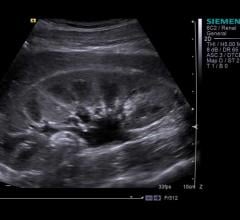May 1, 2007 — Acusphere Inc. announced today it exceeded the criteria for success for two of the primary endpoints — accuracy and sensitivity — in RAMP-2, the second Phase 3 clinical trial of Imagify, (perflubutane polymer microspheres) injectable suspension. All three of the ultrasound-blinded readers had superior sensitivity and noninferior accuracy to nuclear stress, the most frequently used imaging procedure for the assessment of coronary artery disease.
Although RAMP-2 did not achieve the specificity endpoint, Acusphere had previously reported superior specificity for Imagify in its first Phase 3 trial, RAMP-1. High accuracy and sensitivity were the top priorities in RAMP-2, and the company believes these results will support a strong NDA submission in Q4 2007.
Imagify is the first ultrasound contrast agent designed to assess perfusion. Myocardial perfusion is blood flow in the heart muscle and is a sensitive marker of coronary artery disease. Currently, perfusion information is not available using cardiac ultrasound but must be obtained using a nuclear stress test. Perfusion with ultrasound would have many potential benefits over nuclear stress testing, including quicker results, lower cost and no exposure to radioactivity.
"Perfusion, that is, myocardial blood flow assessment, has been a key goal for heart ultrasound for years,” said Michael Picard, M.D., director, Clinical Echocardiography at Massachusetts General Hospital and clinical monitor for the RAMP-2 trial. “Cardiologists use ultrasound for diagnosis and management of many conditions and the addition of perfusion information would be a breakthrough. This would allow us to identify in a single, convenient, non-invasive test the patients at risk for a heart attack. Currently, this same assessment often requires multiple tests or invasive tests. These trial results, especially for sensitivity, are exciting because they offer the prospect of a new approach for detecting heart disease."
About RAMP-2 and Trial Design
These Phase 3 trial results were from RAMP-2, which was designed to demonstrate that Imagify-enhanced cardiac stress ultrasound is non-inferior to nuclear stress. Non-inferiority was measured in three primary endpoints, which evaluated performance in three different patient groups: 1) accuracy in all patients, 2) sensitivity in patients with disease, and 3) specificity in patients without disease. The criteria for success were for 2 out of 3 ultrasound-blinded readers to be statistically non-inferior to the median nuclear-blinded reader.
* Accuracy: 3 of 3 ultrasound-blinded readers were non-inferior (p less than or equal to 0.001)
* Sensitivity: 3 of 3 ultrasound-blinded readers were superior (p less than or equal to 0.020)
* Specificity: 1 of 3 ultrasound-blinded readers was non-inferior (p = 0.01)
In the RAMP-2 clinical trial, we believe Imagify was well tolerated, with the majority of adverse events (AEs) reported being mild in intensity, transient, and resolved without residual effects. The most common AEs reported were headache, increased white blood cell count, flushing, nausea, and chest pain. Each patient in the trial was subjected to pharmacological stress to assess myocardial perfusion. The majority of these AEs occurred following the administration of the dipyridamole pharmacologic stress agent. Serious adverse events (SAEs) were reported in six patients. All SAEs were non-life threatening. Seven of the 457 patients enrolled discontinued dosing in the clinical trial due to AEs/SAEs. Imagify has now been cumulatively studied in over 1,000 patients being evaluated for coronary artery disease.
In Real-time Assessment of Myocardial Perfusion-2 (RAMP-2), 457 patients were studied at 11 clinical sites located in the U.S. and Europe. All of the patients enrolled in the trial were suspected of having coronary artery disease based on a variety of symptoms such as chest pain. In accordance with the trial design, patients who did not have a nuclear stress test or whose nuclear stress test was not in accordance with the trial protocol were evaluated for safety but excluded from the primary efficacy analysis.
The reported efficacy results from RAMP-2 are based on 377 patients. All ultrasound images were interpretable. Coronary angiography was used in 98 percent of the patients studied as the truth standard to determine which patients actually had disease and which did not. The company is now working with its clinical investigators to prepare a more detailed description of these clinical trial results for submission to a peer reviewed scientific journal in the next few months. In the meantime, we are also working with our clinical investigators to support them in their preparations for various upcoming scientific meetings.
For more information visit www.acusphere.com.


 August 17, 2023
August 17, 2023 
